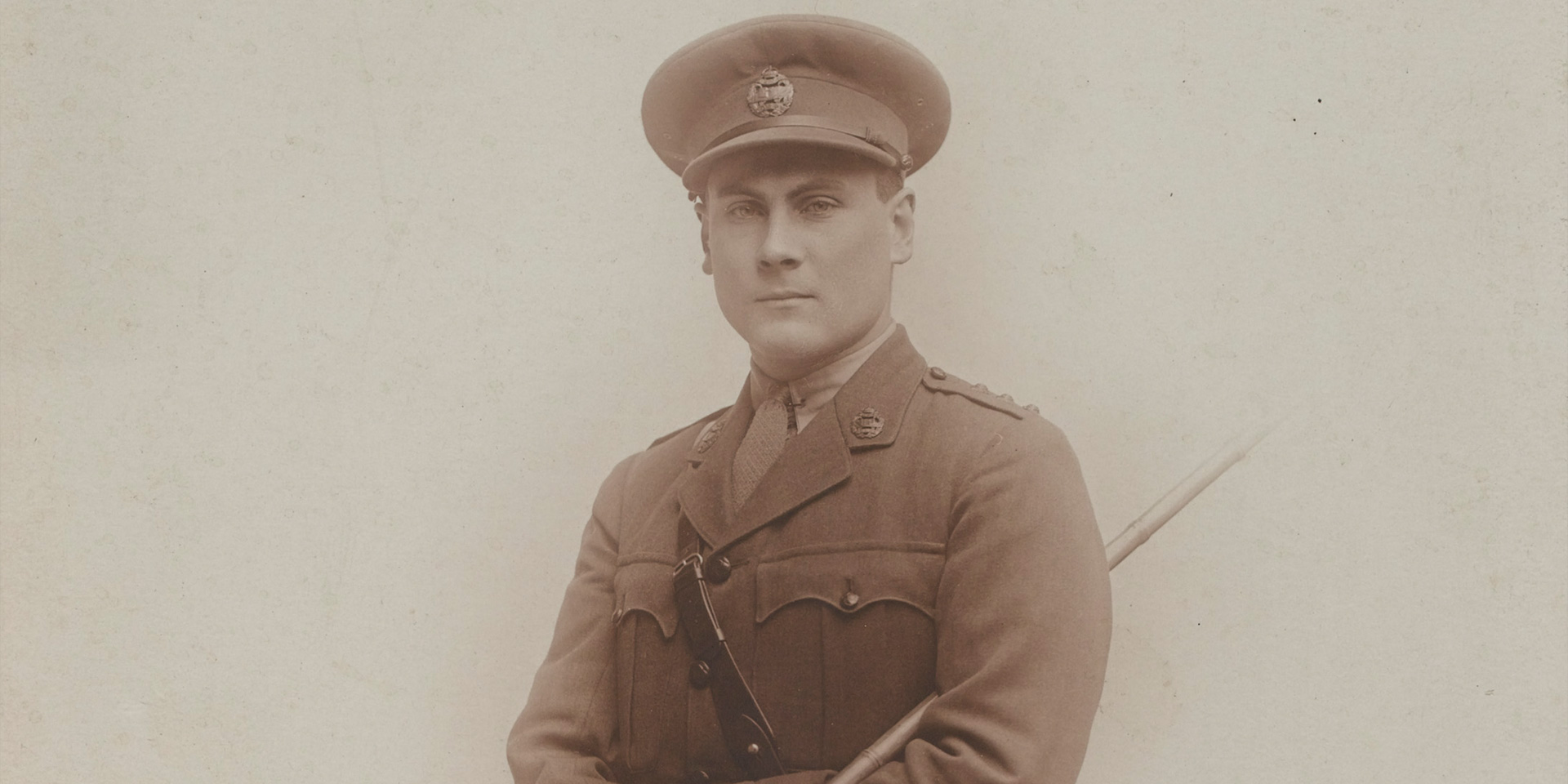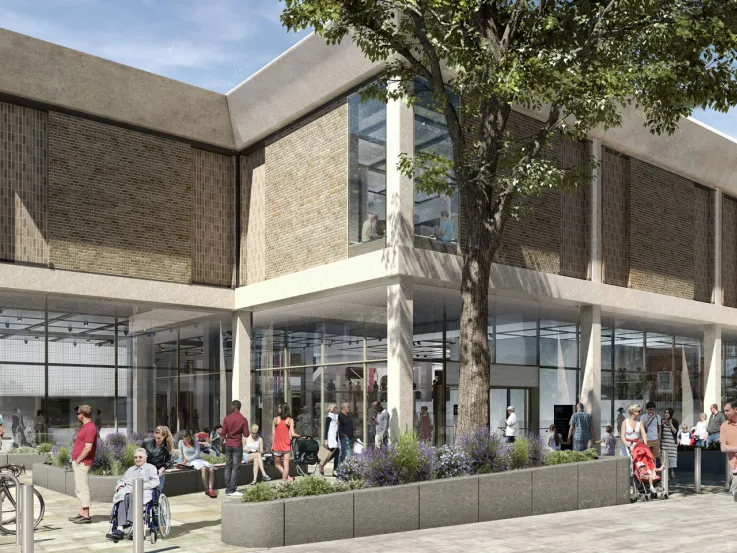Hampshire soldier's memoirs and maps describe the battle at Amiens
One hundred years ago, in August 1918, General Sir Henry Rawlinson's Fourth Army launched a major attack at Amiens. This struggle helped decide the war on the Western Front and demonstrated that the British Empire forces there had evolved into a highly-skilled and effective instrument of war. The map and memoirs of Captain Daniel Hickey of the Tank Corps shed light on the Allied victory at Amiens.
Between March and July 1918, Germany's attempts to break through on the Western Front had finally ended with the French counter-attack on the Marne on 18 July, forcing the exhausted Germans back. The morale of the German soldiers began to waver and the strategic initiative passed back to the Allies.
At 4am on 8 August 1918, the assault began on the vulnerable salient created by the German offensives at Amiens. Eleven divisions (three British, four Canadian, and four Australians) used over 2,000 guns, 450 tanks and 1,900 aircraft to support the attack.
Hickey was a liaison officer with the Australian infantry and guided his three tanks on foot to their targets. Without men like Hickey, tank crews could not communicate with other tanks or with their supporting infantry due to the noise of their machines and the sounds of battle. The assault infantry worked well with the barrage and supporting tanks, but Hickey, walking beside his tanks, soon found himself in a vulnerable position:
'About half-way to our objective, while passing on the right of Morcourt, I heard the whizz-whizz, zip-zip of sniper's bullets. They struck the earth round about me. When I realised that they were meant for me, I took cover in a shell hole. Then I went on... The tanks and infantry were moving forward without a hitch...'
In the days that followed, the Allied advance gradually slowed as German resistance stiffened. The advancing troops outran their supporting artillery and many of the tanks were knocked out by enemy fire or suffered mechanical failure.
On 10 August, Hickey led his section in a poorly planned night attack at Proyart alongside the 37th Australian Battalion. This time the Germans knew they were coming and darkness made it hard for the tanks to move safely. After being bombed by a German plane, the attackers' presence was revealed to the enemy.
Through heavy fire, Hickey tried to direct his tanks by 'battering on the front with my stick to attract the attention of the officer inside', but was once almost 'jammed between two tanks as they struggled to turn'. The German anti-tank fire had successfully stalled the advancing tanks and the infantry sustained heavy losses. The operation was called off, with nearly all of Hickey's men wounded.
Despite occasional setbacks, like those at Proyart, the wider campaign continued to succeed. By the battle's end on 12 August, a gap of nearly 24km (15 miles) was punched in the German line south of the Somme. The battle at Amiens illustrates how British Empire forces learned to combine infantry, artillery, tanks, cavalry and aircraft in a co-ordinated 'all arms' attack. Hickey's work with the Australians is an example of this process in action.
The attack at Amiens was the first time that large-scale capitulations had occurred. The German Commander-in-Chief, General Eric Ludendorff, called it 'the black day of the German Army' and later concluded in private with the Kaiser that Germany could no longer win the war. Amiens began the period known as the 'Hundred Days', a continuous series of offensives along the line that drove the Germans back, eventually forcing them to sue for peace.
Notes to editors
For more information, please contact Kelly Scandone at marketing@nam.ac.uk or 020 7881 2433.
About Daniel Edgar Hickey
Daniel Edgar Hickey (1895-1976) was born in Buenos Aires on 24 March 1895. He was the son of DJ Hickey of the Buenos Aires Great Southern Railway Company, one of several British-owned companies that built and operated railway networks in Argentina. In 1910, Daniel Hickey travelled to Britain for his education, later graduating from the University of London with a First Class Degree in Spanish. While studying, he also joined the University of London's Officer Training Corps (OTC).
In 1915, Hickey was commissioned from the OTC as a second lieutenant with the Suffolk Regiment. In December 1916, he transferred to the Tank Corps, then known as the Heavy Branch of the Machine Gun Corps. After training at Bovington Camp in Dorset, he arrived in France on 22 August 1917. He was promoted to lieutenant in April, and acting captain in early August of that year.
Hickey first went into action in October at the Battle of Passchendaele (1917). In December, his section captured Fontaine-Notre-Dame as part of the mass tank attack at Cambrai. When the Germans counter-attacked, Hickey was second-in-command of a group of tanks that drove the enemy from Gauche Wood. Hickey's tanks also covered the retreat of the 2nd Division during the German Spring Offensive in March 1918.
Hickey left the service in January 1919 and worked as a Chartered Accountant after the war in London. He later worked as a sub-editor for BBC Southern European News in 1941. He was also the author of several plays in the 1930s, including 'Youth in Armour' and 'Over the Top'. He later settled at 38 Westfield Road, Lymington, Hampshire, where he died in 1976.
National Army Museum
The National Army Museum is the leading authority on the history of Our Army. Founded in 1960 by Royal Charter and established for the purpose of collecting, preserving and exhibiting objects and records relating to the Land Forces of the British Crown, it is a museum that moves, inspires, challenges, educates and entertains. The Museum seeks to tell the story of Our Army, the personal experiences of the soldiers who have served in it and to connect the British public and its army, demonstrating how the role of Our Army and its actions are still relevant today.
Heritage Lottery Fund
Thanks to National Lottery players, we invest money to help people across the UK explore, enjoy and protect the heritage they care about - from the archaeology under our feet to the historic parks and buildings we love, from precious memories and collections to rare wildlife.
For more information, please contact Katie Owen, HLF press office on 020 7591 6036 or 07973 613820 (out of hours mobile).


